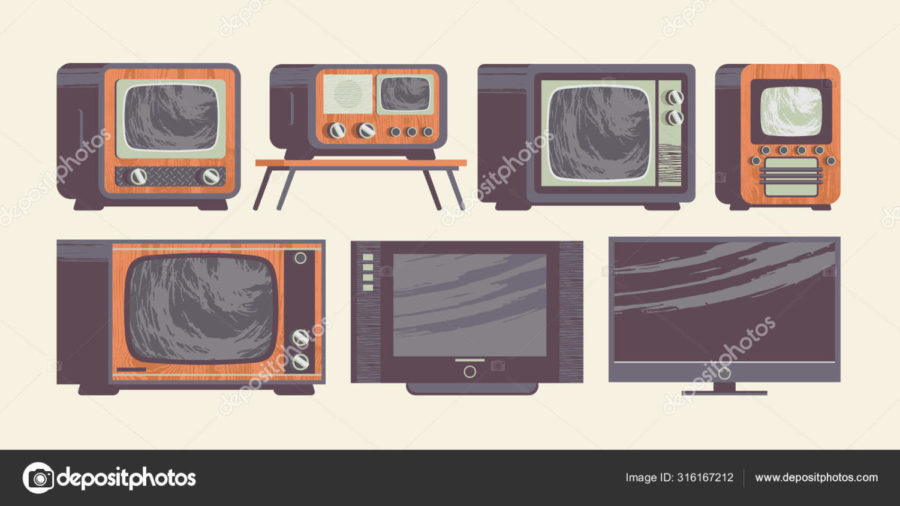From the Archives – Inkwell (2008)
TV was changing 15 years ago – isn’t it always?
TV has come a long way. Learn about what was making people nervous 15 years ago
May 2, 2023
Please enjoy this archived article from the old Mentor High School Inkwell, one of the earlier incarnations of the Mentor High School student newspaper that ran from 1992-2021 both in print and online. Special thanks to Mrs. Ford and the GenYes team for scanning and sharing the original article.
Television has come along way from antennas on the roof and “rabbit ears” on the wooden console TV (ask your grandparents). I distinctly remember back in the ’80s having to get up to change the channel! Sometimes it was just easier to leave it on the same channel then get up. NBC’s Must See Thursday line-up was built for that reality!
Just as the remote control revolutionized becoming a true couch potato (no pun intended), Claire Barnes wrote about the revolution that was coming to broadcast TV in early 2009 when all broadcasts went to digital. This paved the way for high-definition, wide-screen broadcasts that we all take for granted today. As is often the case in this country, even good news like these improvements was met with some concern over whether poorer communities were going to be left behind, much like internet accessibility and cell phone service today, or rural electrification over one hundred years ago. Such is life in the United States of America.
One wonders what Claire would have made of smart TVs and streaming back then had she known what was coming. Hopefully, she has made the adjustment by now.
– Mr. Couch, Cardinal Nation Advisor
November 10, 2008
Why Your TV Won’t Work the Same Next February
by Claire Barnes, Staff Writer
Digital television (DTV) is a modern type of over-the-air broadcasting technology that enables TV stations to provide significantly clearer pictures and better sound quality. On February 17, 2009 full power television stations will turn off their analog channels and begin broadcasting exclusively in digital format.
You may be wondering “Why the switch?” For one, DTV technology is more flexible and efficient than the current analog system. The switch will allow television stations to offer crystal-clear pictures and sound, plus more channels and programming.
Who’s affected? All those households that use an antenna to watch TV on a set that has an analog tuner and don’t subscribe to cable, satellite, or any other pay TV service (over 70 million TV sets) will risk losing their signal. If these people don’t want to lose their signals they must upgrade to DTV by February 17th, 2009.
Consumers have a variety of options such as keeping their analog TV and purchasing a TV converter box. They can also connect to cable or another pay service, or they can purchase a television with a digital tuner.
Congress created the TV Converter Box Coupon Program for homes that wish to keep using their analog sets.
This program allows households to obtain up to two coupons, each worth $40 that can be applied toward the cost of eligible converter boxes.
The National Association of Broadcasters(NAB) estimates more than 60% don’t know about the transition. Groups such as The Leadership Council on Civil Rights and the National Hispanic Media Coalition are worried the poor and elderly may not be able to afford upgrading because they are on fixed incomes. Even with the coupon, they still have to pay about 20 extra dollars for a converter box.
What do you think about the switch? A number of students at Mentor High were asked what their opinions on the switch were. They responded with…nothing. They really didn’t care about making the transition on February 17, 2009 and some students didn’t even know about the switch.
Things are being done to inform people. Retailers have begun marking sets with consumer warning stickers and posting signs. By December, stations are expected to start running public service announcements.
Digital television is going to revolutionize the way we view TV by February 17, 2009, but who will be left behind? This could be the end to all those memories of having your grandparents spend hours on Thanksgiving adjusting the TV antennas just to get a glimpse of the Macy’s Thanksgiving Day Parade. Or could this be a new beginning for American broadcasting? Whether you support the transition or not it is coming so be prepared or you’ll be left in the dark.








